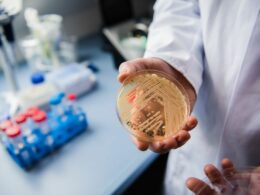A vaccine that can kill and prevent brain cancer has been developed. Researchers have found a way to transform cancer cells into effective anti-cancer agents by harnessing a previously untapped mechanism.
New research from the lab of Khalid Shah, MS, Ph.D. at Brigham and Women’s Hospital, a founding member of the Mass General Brigham healthcare system, has developed a novel cell therapy approach to eradicate established tumors and induce long-term immunity, training the immune system to prevent cancer recurrence.
With a highly developed mouse model of glioblastoma, a fatal form of brain cancer, the team saw encouraging results from testing their dual-action, cancer-killing vaccine.
Science Translational Medicine is the publication where the results can be found.
Read more: COVID-19 virus found in the brain: autopsies reveal shocking new information.
Khalid Shah, MS, Ph.D., director of the Center for Stem Cell and Translational Immunotherapy (CSTI), vice chair of research in the Department of Neurosurgery at the Brigham, and faculty at Harvard Medical School and the Harvard Stem Cell Institute, is the corresponding author on the paper and says, “Our team has pursued a simple idea: to take cancer cells and transform them into cancer killers and vaccines” (HSCI).
Gene editing allows us to repurpose cancer cells into a treatment that kills tumor cells and boosts the immune system, killing primary tumors and preventing cancer.
Developing a cancer vaccine is a hot topic in many laboratories, but Shah’s group takes a novel approach. The team uses live tumor cells, which have an attractive property, for their research instead of inactivated tumor cells. Living tumor cells, much like homing pigeons, will travel great distances across the brain to regroup with their kin.
Using the gene-editing tool CRISPR-Cas9, Shah and colleagues took advantage of this property and repurposed living tumor cells so that they would secrete an agent capable of killing tumor cells.
Furthermore, the tumor cells were engineered to express factors that would make them easy to recognize, tag, and remember by the immune system, thereby preparing the immune system for a sustained anti-tumor response.
They used mice with human bone marrow, liver, and thymus cells to test their repurposed CRISPR-enhanced. They reverse-engineered therapeutic tumor cells (ThTC) in an immune system similar to humans. Additionally, Shah’s team integrated a double-layered safety switch into the cancer cell that, when turned on, eliminates This.
Using this dual-action cell therapy in these models was feasible, effective, and safe, providing hope for its eventual clinical application. Shah’s team chose this model and used human cells to make translating their findings to patient settings more accessible, but more research is still needed.
Despite the technical nature of much of the Center’s work, “the patient is always front and center,” as Shah put it.
We hope that by adopting a novel but generalizable strategy, we can create a therapeutic cancer vaccine that will revolutionize medical practice.









